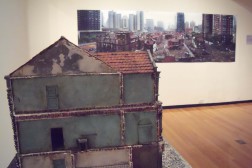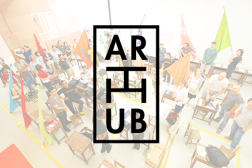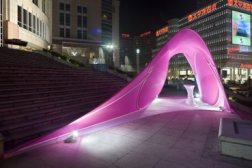
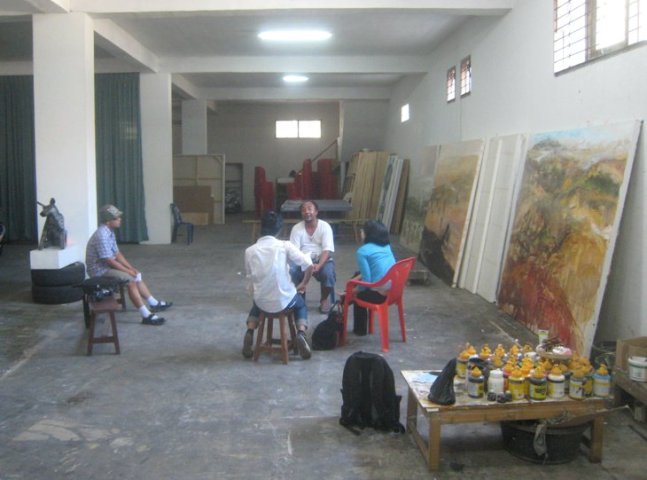
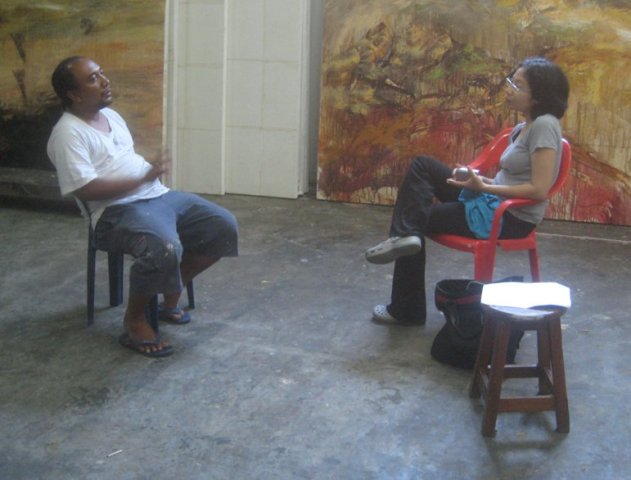
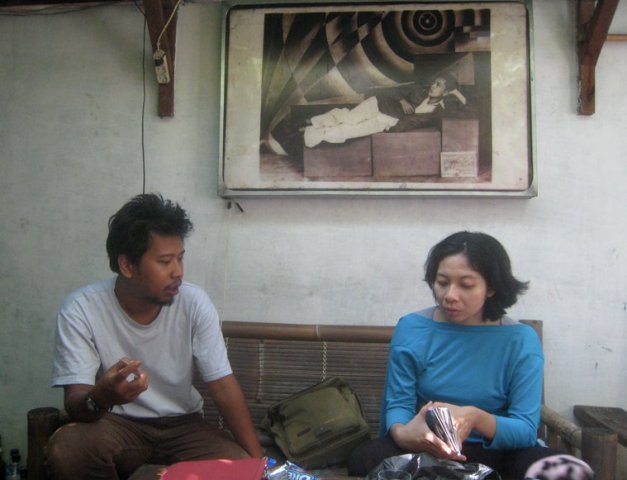
Indonesia and 40+4, The New Chapter
A first inter-Asian version of 40+4, Art is Not Enough! Not Enough! is being produced in Indonesia with a focus on two cities (Jakarta and Yojyakarta) by Alia Swastika and Lothar Spree (camera).
The Indonesia project will be connected to the Shanghai original project but will be produced with local partners. Alia Swastika acts as the curatorial supervisor of the project. Lothar Spree has done the camera work and will also train local cameramen to assist Alia on the project. IVAA (Indonesian Visual Art Archive) and Farah Vardani act as co-producer to this project.
Feedback from Alia:
The project was held in Yogyakarta and Jakarta from the 13th to the 18th of June, 2008.
There were some changes from what had originally been planned, particularly in regard to the artists we interviewed. We planned to interview 40 artists from Yogyakarta, Bandung and Jakarta. But, due to the limitation of time, we only managed to start with a conspicuous number of 29 artists from Jakarta and Yogyakarta. We will interview artists from Bandung during a second phase of the project. For artists list please click here.
How we choose the artists
On our list, we had artists from very different backgrounds, in terms of the medium they used, their political point of views, their “tastes” and aesthetic visions, and also their popularity. By requiring a variety within these differences, we hoped that we could portray different answers, which would ultimately be more challenging and stimulating for viewers. In the end, after completing the interviews, we realized these differences helped us to understand the reasoning behind the answers given by each artist. We truly enjoyed the outcome of our interviews, even if it was done in a very condensed time, because the answers given by the selected artists seem to be the the most genuine and honest statements we have heard for a long time.
The questions we asked spanned a variety of subjects, which are rarely brought up in every day life in Indonesia. For a full list of questions please see here.
Some of the artists were very surprised by the questions, some of them were confused, and some of them took a long time to think, before finally answering the questions. Some questions, such as, “Do you think an artist is powerful? Do you like to be so?” were answered by artists in a very safe way; they wanted to demonstrate that they had the power in terms of their positions as artists, but they don’t have the power to control other people. Or, the question: “Do you think being an artist needs loyalty?” For this question, most artists answered yes, except one who said no, because he believes that his artistic practice is only one way of finding the essence of what it means to be a human being. So, if his biggest goal is ultimately reached, then he won’t need to practice art anymore.
It was interesting to see how artists answered questions about the current art market. Most of the “successful” artists had shown a contradiction—a pessimistic tone on one hand and an optimistic spirit on the other—in reference to all the questions regarding the art market. Their attitudes were different than the younger artist, who had not yet become so cynical. For other general questions, like the relationship between art and politics, art and ethics, art and culture, each artists’ point of view was reflected in his/her own representation of his/her own artistic practice. The majority of the established artists gave very strong statements in regards to those questions, and I felt that we could relate to their opinions about the nature of their own work. In fact, by examining their answers we could trace all the conceptual ideas behind the artworks created by each of the artists.
Most of the artists were grateful and happy to be involved in this project. They discovered that the questions asked were neither easy nor self evident, but were actually quite challenging. Our questions opened them up to ideas that had never come to mind, or if they had, then they were very abstract and unidentified. In a way, by facing these kinds of questions, they had to build a bridge between their personal experience and their general perception of the world.
Sometimes we were unable to conduct interviews in an artist’s studio (some were conducted in galleries, in cafes or in art spaces), but the interviews held in studios carried an undeniable special “effect;” they were more intimate, and thus in a way more effective. Even in Yogyakarta, the concept of an artist’s studio is something quite new, but most of the established artists had their own “space” to carry on their artistic practice (most of these studios were part of their residences). Being in their studios allowed them to feel comfortable, because they were in their own territory, which meant they showed more confidence and autonomy when answering questions.
Last but not least, unfortunately we were only able to interview three female artists. Finding female artists in Indonesia, like most places around the world, is not very easy, particularly when choosing artists who have interesting backgrounds, a strong body of work and independent perceptions about the world. The three artists we interviewed, who represent three generations of women/artists, gave very interesting answers and genuine statements about their artistic practices and the way they perceive the art world.
This project is realized by Alia Swastika in co-operation with Farah Wardani and IVAA; supported by Arthub.
